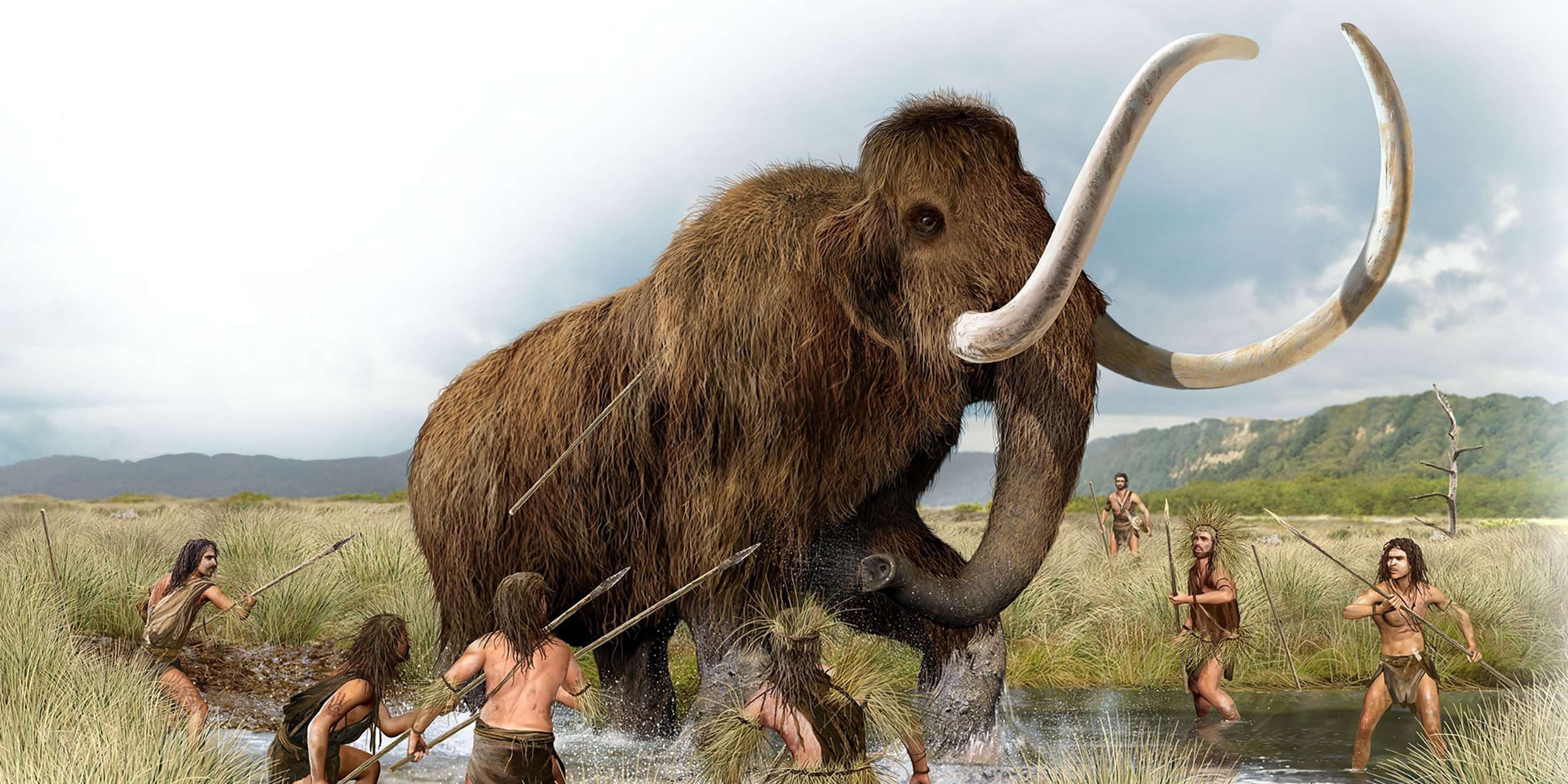Originally published 1 July 2003
Fifteen thousand years ago, most of northern North America was covered with a continent-spanning glacier a half-mile or more thick. The ice reached south to the valleys of the present Ohio and Missouri rivers, and extended from coast to coast.
With so much ice on the land, the sea level was lower, and the floor of today’s Bering Strait between Asia and Alaska was dry. Across this land bridge, Asian nomads migrated into Alaska, which remained partly unglaciated. But there the invaders were bottled up, blocked from moving southward by the glaciers.
Then the global climate began warming, and the ice started melting. An ice-free channel opened down across Canada, between the mountain glaciers in the west and the continental glacier to the east. The Asians trekked south through this ice-walled channel into what must have seemed like a dreamlike Eden.
If there were humans in the Americas before these migrants arrived about 11,000 years ago, the evidence for their presence is sparse and disputed. What the new arrivals did find was a thriving fauna of large and diverse mammals — elephant-like mammoths, mastodons, rhinos, ground sloths as big as rhinos, beavers the size of bears, armadillo-like glyptodonts, saber-toothed tigers, and herds of horses and camels.
Within a thousand years, this so-called megafauna of North America was gone.
Why did so many animals become extinct so fast?
The Asian migrants brought with them a powerful new technology — spears tipped with finely crafted flint points. Archeologists have found sites where flint points and the bones of slaughtered animals are mingled.
Was human overkill the cause of the extinctions? At about the same time, the generally warming climate experienced an abrupt interval of bitter cold. Was climatic shock the culprit? Or did the two together, hunting and climate change, do in the big animals?
Few archeological issues have generated so much controversy. The scientific debate about the cause of the ice-age extinctions has become embroiled with political squabbling over contemporary environmental issues.
The overkill theory is easy to understand, and fits with our image of ourselves as all-powerful, said Donald Grayson, a University of Washington archeologist. But is it true?
To answer the question, archeologists have tried to discover exactly when the Asians arrived, when the climate shock occurred, and when the animals went extinct. The dating methods are not exact, however, and the three kinds of evidence are seldom, if ever, found together. It’s like comparing three clocks, none of which is keeping accurate time.
Now Guy Robinson, David Burney, and Lida Pigott Burney of Fordham University in New York have devised an ingenious way to measure human migration, climate change, and animal extinction by the same clock, with unprecedented precision.
The researchers dug down through layers of mud at four sites in New York, and measured microscopic indicators for each of the three relevant factors.
As a proxy for human presence, they looked for charcoal dust blown into the sites from large fires; a sharp increase in such charcoal has marked the arrival of humans on islands around the world. For climate, they examined tree pollen, which records the transition from glacial to postglacial climate. And for the animals, they counted microscopic spores of a fungus that thrives in the dung of large animals.
The beauty of this research is that layer by layer the three markers are found together in the mud, as if on the same pages of a book.
At all four sites, the succession of events was the same. First, the megafauna starts collapsing, followed quickly by the evidence of large fires. Only about a thousand years later did the climate deliver its wrenching shock. The researchers’ conclusion: The North American megafauna extinctions were primarily caused by human overkill.
The smoking gun? Hardly. But what I love about this piece of work is its cleverness. This is science at its best, an ingenious bit of detective work to answer a question that has been muddied with the rhetoric of political debate.
No one claims that science is objective, but it strives mightily for objectivity. In the end, a preponderance of evidence — reproducible and accepted by consensus — must resolve every controversy.



